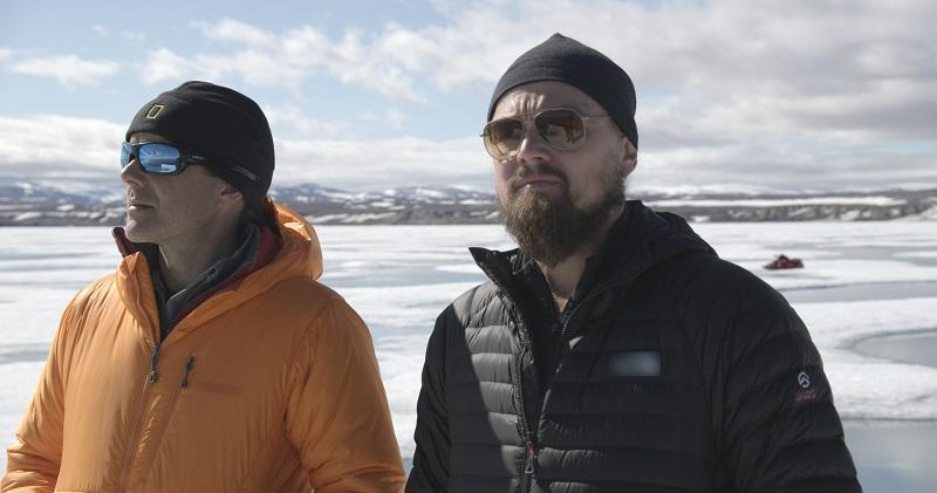The famed conservationist and climate advocate featured alongside Leonardo DiCaprio in documentaries like, Before the Flood, spoke with us about climate change, the ties between environmental and socio economic justice, and what we can do to save and protect our world—even in the midst of a global pandemic.
Green Living: You’ve worked to preserve a lot of the kelp in certain areas of California. And I understand that more than 90% of the kelp in the state has been wiped out due to items like pollution and overfishing. Why is it so important that we work to preserve the kelp and how exactly are you working to do that?
Enric Sala: The giant kelp, especially, is like the redwoods of the sea. These plants can be as deep as 120 feet. And they reach all the way to the surface and they continue growing when they are at the surface and they create the canopy. You can see them when you’re flying over the coast of California, and they are like a forest–they provide the habitat for many species, like cucumber, sea urchins, fish, and sea otters. They are also very important because that canopy helps to reduce the power of the waves and helps to protect the coast. They also produce oxygen and absorb CO2 from the sea water, which helps to mitigate climate change. So they do many, many wonderful things.
GL: As the leader of the Pristine Seas Project, what exactly does that work entail? I understand that you’ve protected nearly 6 million square kilometers of ocean, which is incredible. But what sort of initiatives are really a part of that project?
ES: We use a combination of expeditions and scientific research to assess how healthy these places are. We use economic analysis to show the benefits of protection, and also storytelling–we produce documentaries and other media products and work with local communities to inspire governments to protect some of the wildest places in the ocean.
GL: You’ve been working with National Geographic as an Explorer-in-Residence–I’m curious, what has that role allowed you to do in terms of research, and really being able to provide more education regarding the economic impact of conservation?
ES: Well the name of the position is kind of an oxymoron, right? [LAUGHS] Explorers are supposed to be out there exploring. I used to be a professor at UC San Diego, and I would study the impacts of humans in the ocean, impacts in fishing and global warming. And one day I realized that all I was doing was writing the obituary of the ocean–that was not very fulfilling and I was on the verge of depression. So, I decided to quit academia and work full-time as a conservationist. I know that science alone was not going to cut it, as we needed to communicate to key decision makers about the issues and the importance of protecting key places in marine reserves and national parks and the ocean. I already had a relationship with National Geographic, so I came and knocked on the door and I proposed my mission to them. There are three things that National Geographic is famous for: exploration, research and media. These are the three things that we need to combine to protect the wildest places in the ocean before it’s too late. I bring the science and I can organize scientific expeditions. Then National Geographic has the media power. They liked the idea and that’s, that’s how the position started. The role offers me total flexibility. Explorers are supposed to be free to explore. And exploration is not only geographic or physical exploration–but also, trying to explore ways to inspire people to protect places.

GL: Living in the middle of a pandemic, there’s a lot of conversation about how conservation efforts have sort of been stalled due to COVID-19. And as somebody who has a first-hand glimpse of those effects, what have you seen? Have any of your efforts been stalled? Or are there concerns that there’s less of an emphasis on conservation because people are more worried about their personal health?
ES: Of course–the pandemic has impacted everybody and everywhere around the world. Right now the priority is to make sure that we take care of people who are in need, health-wise as well as those who are suffering economically. But we also need to make sure that we take care of our life support system, which is nature. The most remote places that are protected haven’t suffered as much because nobody goes there. But the places that are closer to shore, particularly areas where people used to go and dive into tourism, they are suffering because of course, the tourism industry basically stopped. There hasn’t been any revenue away to these places for three or four months. And many of these places depend on a large part of their tourism revenue for their finances, So, definitely this pandemic has been a very good wake up call that we need to not only protect more of the oceans, but also in the life cycle. We need to make sure that these places are resilient, so they don’t suffer during a global crisis like this one.
GL: Socio-economic issues are also huge conversation points, as well. And there are so many correlations between social justice issues, conservation issues, and this idea that they’re really one in the same in a lot of aspects–because abuse of nature and abuse of people are unfortunately, two very common themes within our society. I’m wondering what your thoughts are on that, and how you think that this correlation can change moving forward?
ES: You’re absolutely right. Environmental justice and social justice are closely interlinked and people who have suffered the most from COVID are people with lower incomes and some indigenous peoples. To me this pandemic has made it very clear to us that we are not separate from nature, we are one one more species. We think that there are 9 million species of plants and animals on the planet–and we’re just one. That little virus is not even a living entity, it’s just a strand of genetic material that has conquered the most powerful species that has ever lived on this planet. We need to be a little more humble and see ourselves as part of the biosphere and of the living layer of the planet. So, when we think about justice–in the same way that we can not take ourselves out of nature–we cannot think of social justice versus environmental justice. We’re just generally speaking about justice towards other living beings. We need to step out of our pedestal as masters of the universe, and develop some humility and acknowledge that we are one part of an interconnected biosphere, where social and environmental justice go hand-in-hand.
For more information on Enric Sala and his work, visit www.nationalgeographic.com.
Keep up with all of Green Living’s content on our website and on social media.






